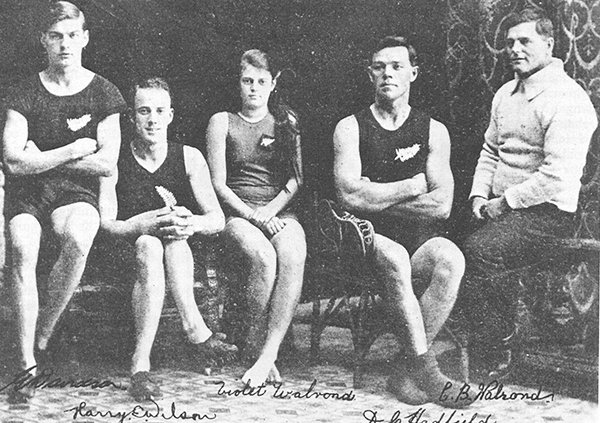
Just 15 years old, and the first woman to compete for New Zealand at an Olympic Games, the many challenges Violet Walrond faced in 1920 were not simply confined to the cold, murky canal waters of Antwerp.
The petite young swimmer from Auckland was one of just four athletes chosen in New Zealands first official Olympic team, for the 7th Olympiad. Because of her age, she was only allowed to attend the Games if chaperoned by her father; and so Cecil Walrond travelled to Belgium as her coach and honorary trainer of the national team.
A mere wisp of a girl 5ft 3in (1.6m) tall and 7st 9lb (48kg) light Walronds preparation for the 1920 Antwerp Olympics was far from ideal. The sea journey took the New Zealanders a gruelling nine weeks, so there were few opportunities for Walrond to train before she swam in her two events the 100m and 300m freestyle.
Walrond, who wore a simple cream frock as her team uniform, was not allowed to leave the teams hotel accommodation except to swim. She had to promise her father she wouldnt even leave her room, waiting patiently while the three men in team (rower Darcy Hadfield, and runners Harry Wilson and George Davidson) went off to train and compete.
The pool for the Olympic swimming competition was a fenced-off part of a chilly, grey canal, with no lane ropes. Walrond was the first female swimmer in New Zealand to adopt the crawl stroke; at the Olympics, only she and the American swimmers used the freestyle crawl.
There was no doubt that she was fast. She finished third in her heat of the 100m, bettering the Olympic record by a second. In the final, won by American Ethelda Bleibtrey, Walrond came home fifth. Although she also qualified for the 300m final, she fell ill and was unable to compete.
Seventy-five years later, Walrond admitted she had never felt nervous, because she had no concept of what the Olympic Games were shed imagined they would be a sort of swimming carnival.
When the team returned home, with Hadfields bronze in the single sculls the teams sole medal, Walrond was not permitted to attend the all-male reception dinner with the other New Zealand athletes.
Walrond continued to swim and perform well in New Zealand after those Games, and had her hopes pinned on returning to the Olympics, in Paris in 1924. Her sister, Edna, an excellent swimmer and diver, had her sights set on competing too. But Cecil Walrond decided his daughters were too much in the public eye and, at 18, Violet Walrond was reluctantly forced to retire from competition.
Walrond, who died in 1996 at the age of 91, remains the youngest athlete to wear the silver fern at an Olympic Games even if it was simply a fern frond tucked into her hatband.